Home > Blog > Antioxidant | Read Time: 10 minutes
Antioxidants like the ones found in nutrient-rich superfoods (think brightly colored fruits) and one super seafood, protect your dog from free radicals and oxidative damage. But as your pet ages, you can take it a step further to truly make a difference for your pet.
Let’s delve deeper into antioxidants…
On the Agenda

What Are Antioxidants?
Antioxidants are wonderful little compounds produced in our bodies and found in foods that protect our cells against oxidative damage.
Video Credit: Healthspan.
Oxidation is actually a reaction that occurs as a result of normal metabolic processes in the body, but it also releases by-products called free radicals. Free radicals roam around the body, robbing electrons from stable molecules. And this is what leads to cell damage known as oxidative stress.
How Antioxidants Work
It’s pretty clear that we want to reduce oxidation and oxidative stress.
This is where antioxidants come in. Antioxidants fight oxidative stress by neutralizing free radicals — which means the free radicals don’t have the chance to steal electrons and the oxidation doesn’t occur. Ultimately, this means that the cell damage known as oxidative stress doesn’t occur either. Antioxidants are pretty neat.
Why Your Dog Needs Antioxidants
Lily, a long-haired dachshund, at 8 months, 2 years, 7 years, and 15 years. Photographed by Amanda Jones.
Thinning skin, wrinkles, crow’s feet– oxidation. What you might not realize is that very similar changes occur for our pets as they age. Ever noticed how older dogs have graying muzzles? Their muzzles turn gray for the same reason our hair turns gray– oxidation.
Of course, aging is normal for both humans and our whisker-toting counterparts. But what exactly is normal aging? The average lifespan of a dog is 11-12 years old. A dog becoming a senior citizen with arthritis, graying hair, dementia at 7 or 8 seems normal. I hope you’re sitting for this– it’s not.
Since free radicals result from normal metabolic processes, they are expected. Therefore, some amount of oxidation is also expected, but our pets are exposed to excess oxidation every single day.
- Inflammation (both acute and chronic)
- Air Pollution (including cigarette smoke)
- Environmental radiation (like UV rays)
- Toxin exposure (including pesticides, cleaning products, phthalates from plastics, contaminants like radon in drinking water)
- Infection
- Trauma
- Carcinogens in kibble (wait — what? Check this out)

It’s a long list, take a breath. With one or many of these additional factors in place, the body will likely experience excess oxidation — which means more cell damage and more health problems.
Let’s pause for a moment on inflammation. Many dogs are fed kibble. And kibble often contains a lot of carbohydrates, upwards of 40-50% in fact, to bind the kibble together– grains and starches also happen to be cheap.
Such a high percentage of carbohydrates actually isn’t species-appropriate for scavenger carnivores like your dog, and the excess carbohydrates can lead to inflammation, which then can lead to excess oxidation. A high-carbohydrate diet, then, is considered pro-inflammatory. This is just one more reason to switch your dog to a real, whole food diet.
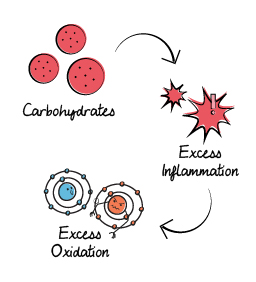
Too many carbohydrates → can lead to excess inflammation → can lead to excess oxidation
In addition, dogs often eat diets that are low to non-existent in antioxidants, so not only are many dogs eating a high-carbohydrate, pro-inflammatory diet that can lead to excess oxidation, but they are also getting very low amounts of the antioxidants that could fight that oxidation.
The Consequences of Oxidative Damage
Oxidative stress leads to DNA damage, which means damaged and mutated cells. Sometimes the immune system just can’t keep up with the cell damage. Unchecked replication of these damaged cells can lead to tumor formation and cancer.
Here are some important numbers about cancer formation:
- 10% have a genetic link.
- A whopping 90% are controlled by lifestyle.
- 30-40% can be prevented by dietary changes.
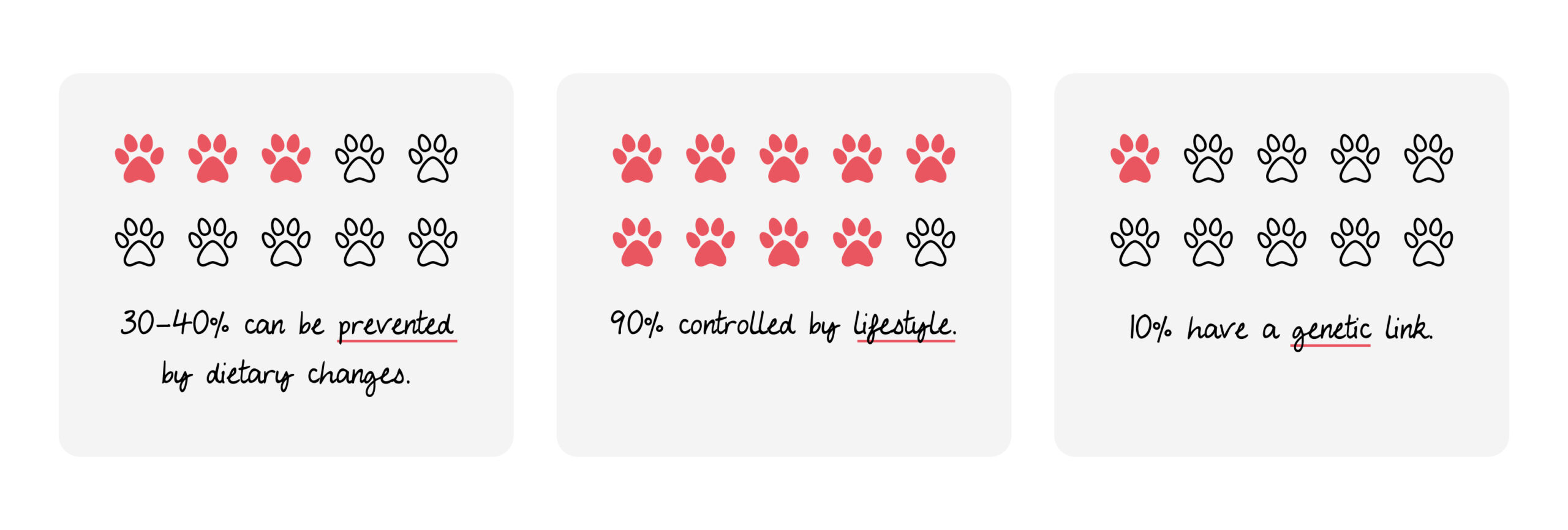
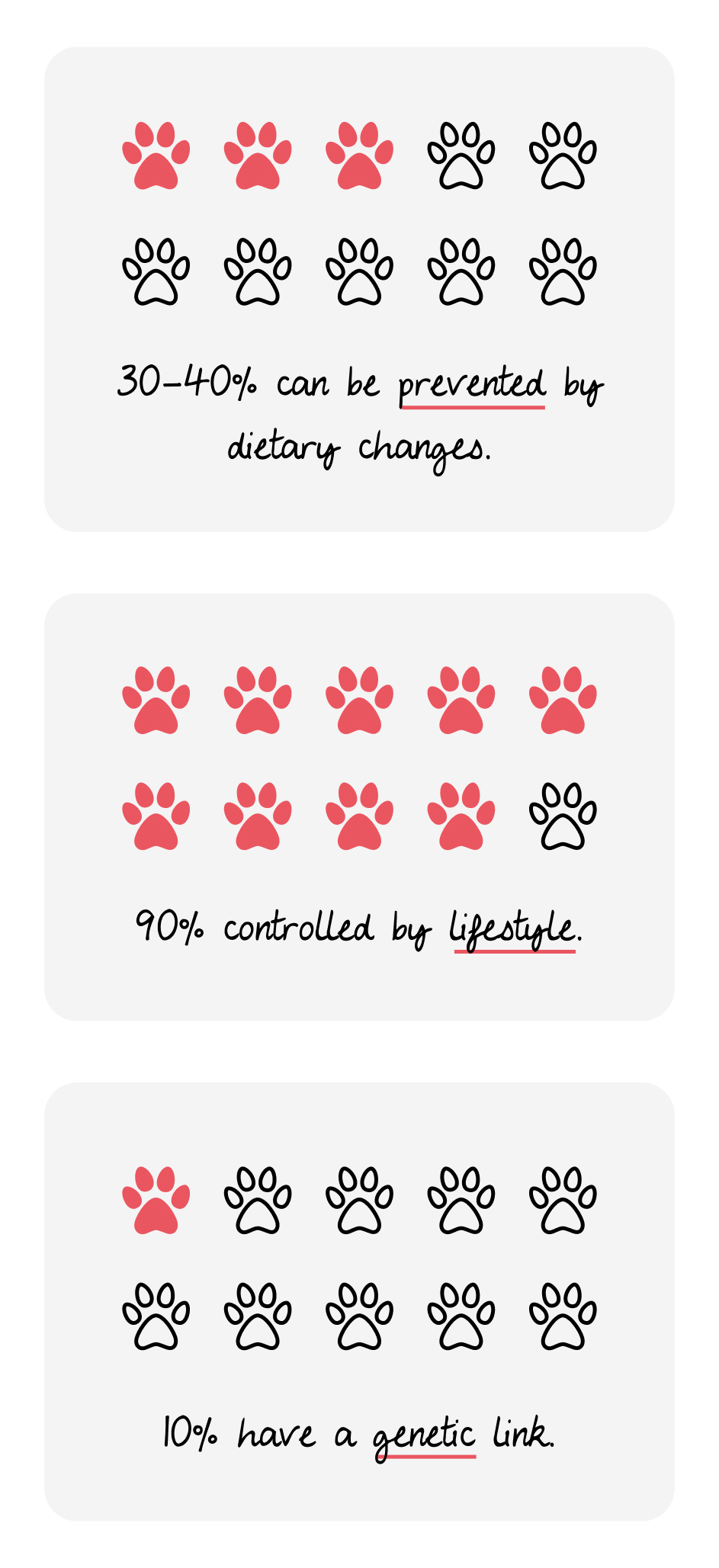
These numbers are actually good news because they indicate that we can take preventative measures to keep that tail wagging for years to come.
Another possible result of oxidative stress is a slew of autoimmune diseases. In the case of tumor formation and cancer, the immune system can’t keep up with cleaning up damaged cells — which leads to replication of mutated cells. In the case of autoimmune diseases, the process is somewhat opposite. The immune system excessively cleans up the damaged cells and actually overflows onto normal cells, causing additional damage.
Here’s another one: inflammation. Wait a minute — didn’t you say inflammation causes excess oxidation? It sure does. But it can also become a result of oxidative stress — particularly chronic inflammation. Any and all organs and tissues can be impacted by inflammation. Even Irritable Bowel Disease is related to chronic inflammation.
And the list goes on. Oxidative stress can also result in diabetes, stroke, respiratory issues, cognitive disorders, and premature aging. A lot of diseases are more connected to oxidative damage than you might realize, so much so that we’ve come to expect certain health problems and life spans for our dogs.

But the reality is that we have more control than we think. (Heard about the dog in Australia who lived to be 30?) By shifting the ratio of pro-oxidants and anti-oxidants, we can fight free radicals and keep your pup doing his favorite things — like leaping for frisbees and expertly sniffing out chicken.
The Best Antioxidants for Carnivores
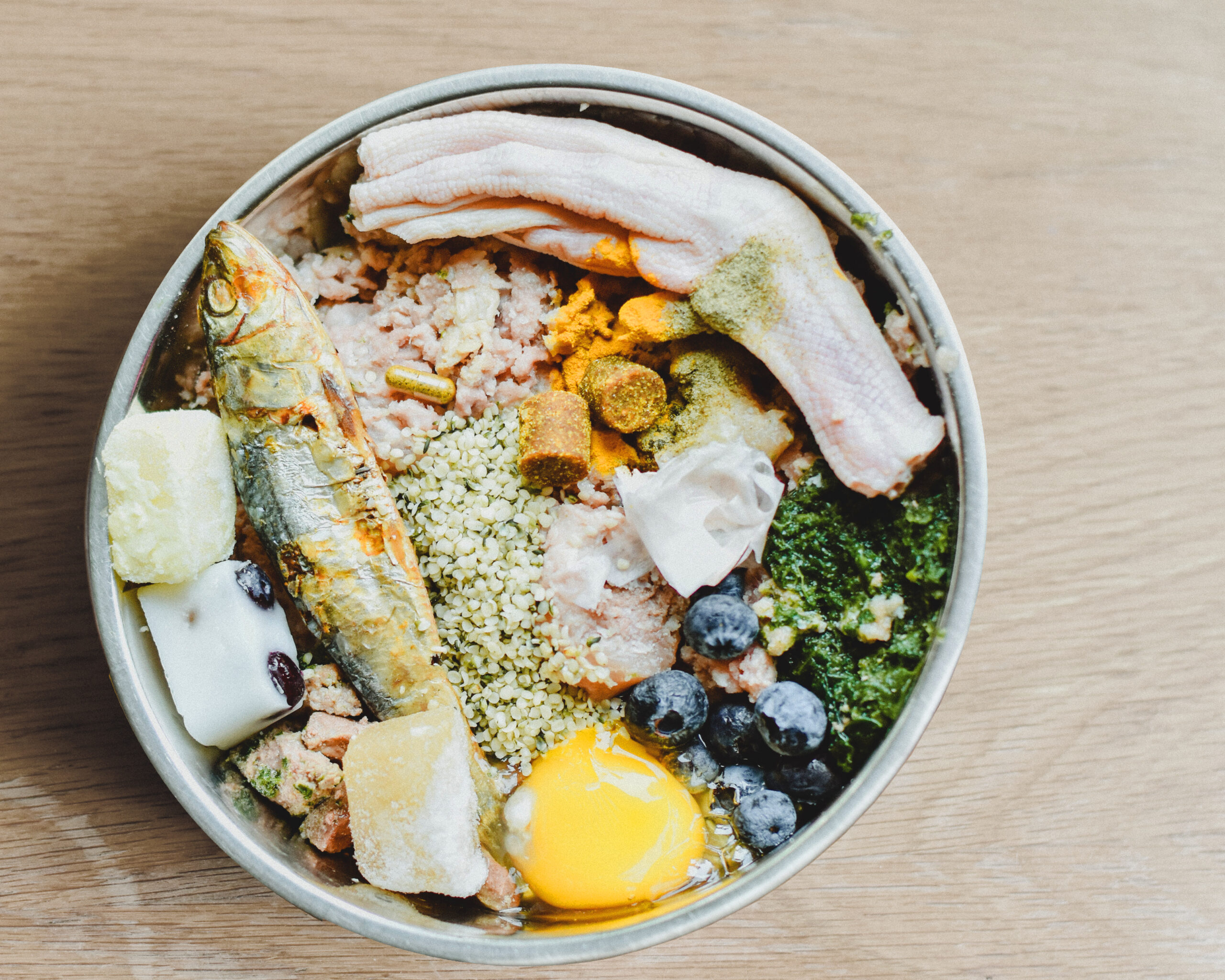
Photo Credit: @lyannatheaussie.
Let’s start with fruits and veggies. Fresh produce offers a myriad of health benefits, including vitamins, minerals, phytonutrients, fiber, and of course antioxidants. Look for bright colors! Orange foods like carrots and sweet potatoes contain flavonoids and beta-carotene (antioxidant alert!). Blue foods like blueberries contain polyphenols (antioxidant alert!). Apples and citrus fruits contain quercetin (antioxidant alert!).
Here are some proven SUPERFOODS for your dog:
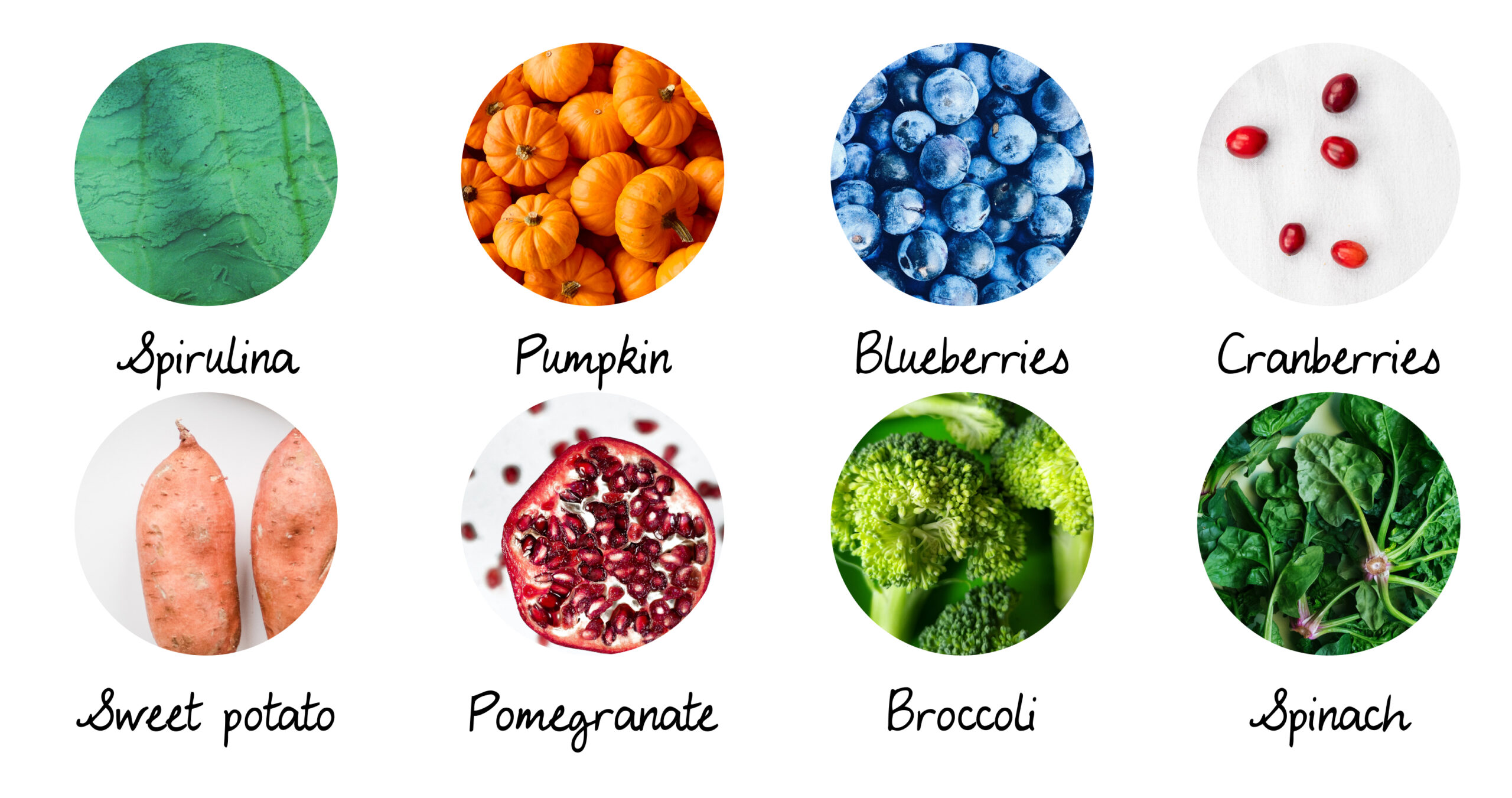
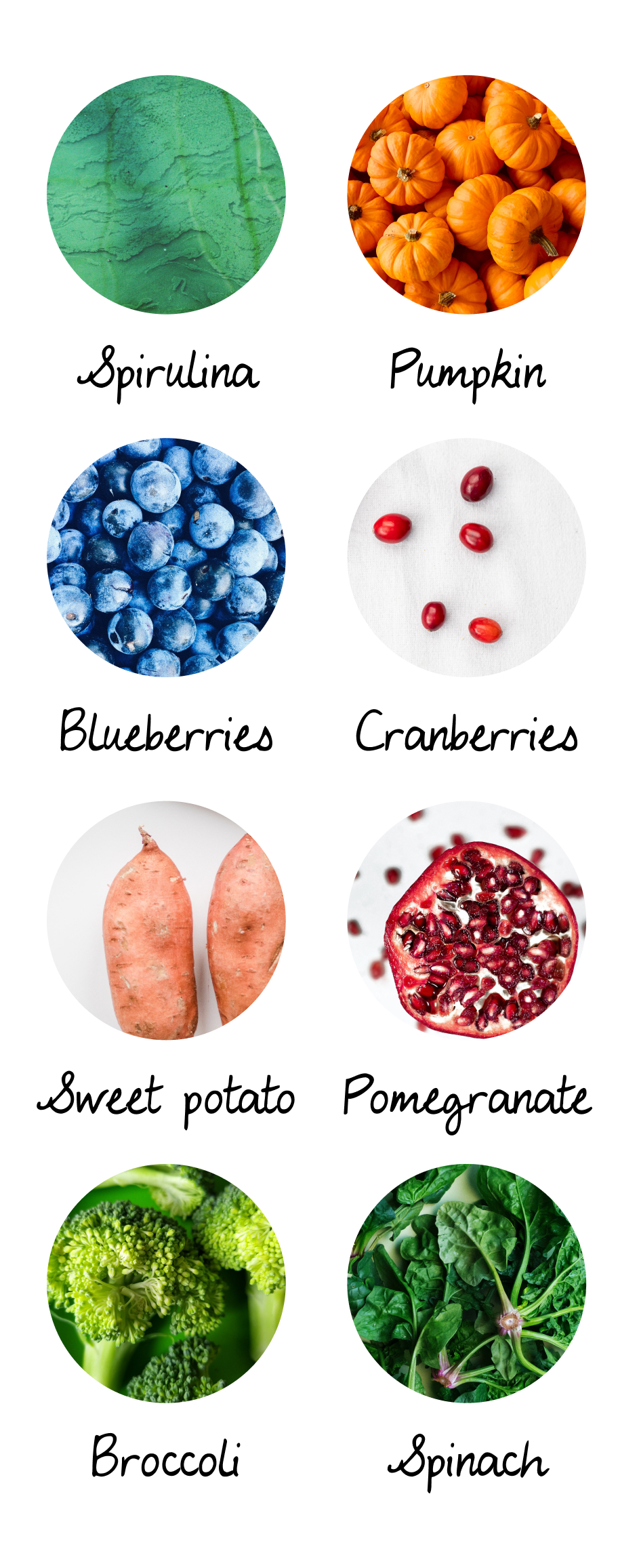
Now let’s talk healthy fat.
We’re talking omega-6 and omega-3 fatty acids. Both are essential, because dogs cannot produce either on their own.
First, we’ll spotlight the EPA and DHA in omega-3 fatty acids. Omega 3 fats are made up of acids EPA, DHA, and ALA. (I won’t bore you with the long-hand of those acronyms.) Dogs need to eat foods that contain the active, ready-to-use forms of Omega 3s (EPA & DHA) because, as carnivores, they lack proper enzymes to convert the inactive form (ALA) as effectively– think greens, flax, and plant oils. When you’re feeding a species-appropriate diet, including fish, grass-fed meats and organs, krill and anchovies, you’re offering your pup a diet rich in ready-to-use forms of Omega 3 EPA & DHA.
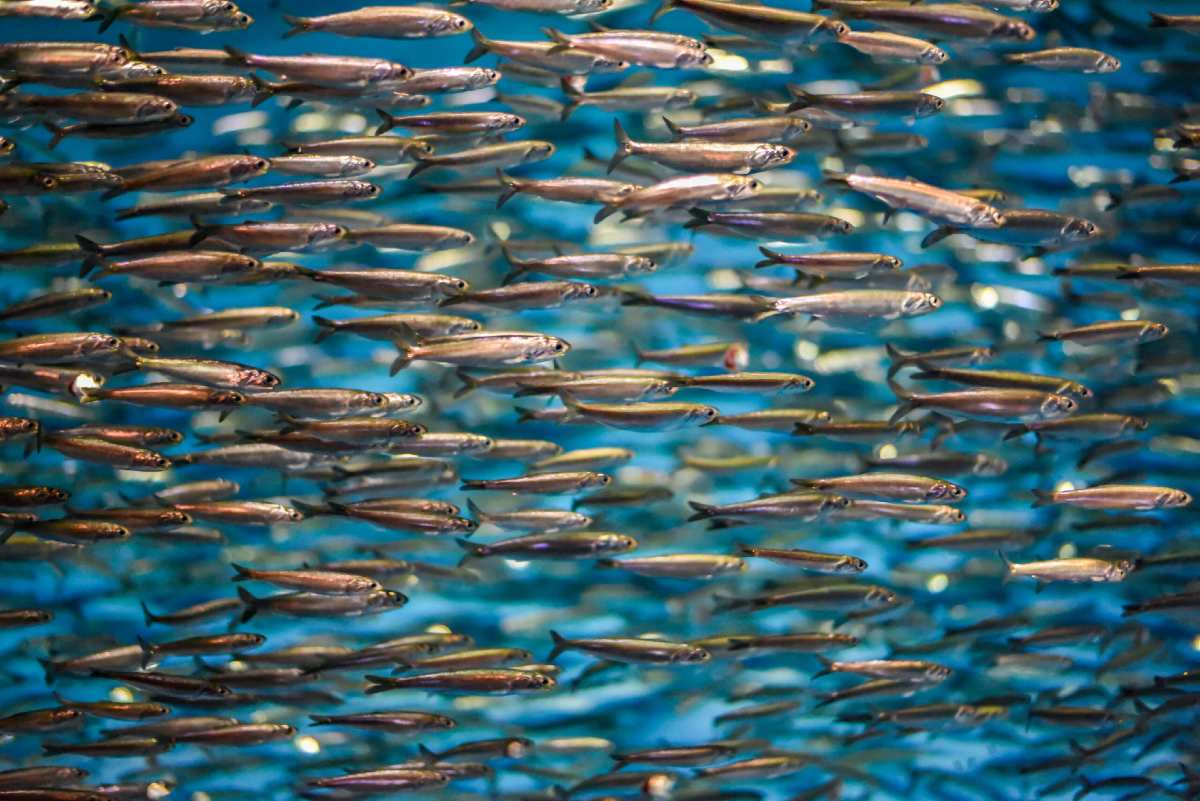
Omega 3s are crucial for your tail-wagger because they not only help to reduce inflammation but they have antioxidant properties, too.
Meanwhile, omega-6s are vital for normal growth and development (especially for skin and hair) and metabolism. Omega 6s are easy to get in a diet. They’re readily available and cheaper because they’re found in ingredients like corn, sunflower and safflower oil, which are commonly used in kibble production. Here’s the thing. Omega 6 is also a pro-inflammatory which is why the ratio of Omega 3:6 should be a priority in every dog’s diet.
It’s all about balance.
When omega-6 and omega-3 are properly balanced, you’re reducing your risk of disease. With too much omega 6, which again is pro-inflammatory, there becomes a higher risk of inflammatory diseases, arthritis stiffness, and a weaker immune system. That’s because inflammation, which is a defense mechanism, isn’t turned off. This means our immune cells continue to damage tissues and cells. (This is a bigger topic for another post!)
The optimal ratio of omega-6 to omega-3 is 5:1, or better yet, a ratio of 1:1. But most kibble-fed dogs receive a ratio of 20:1 (omega-6:omega-3).
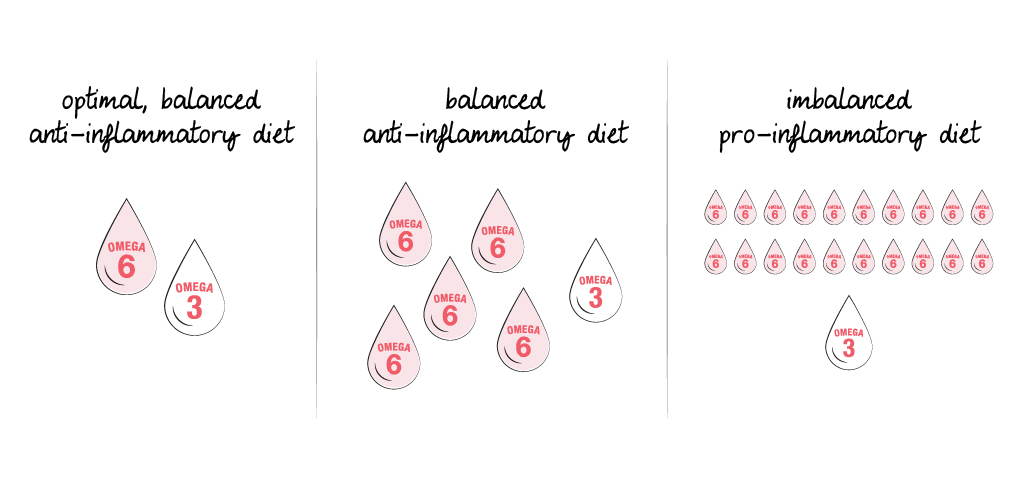

The best way to check off that Omega 3:6 ratio and ensure that they’re getting enough antioxidants in the bowl is by feeding your scavenger carnivore a biologically appropriate diet.
- 15% – 25% nutrient-dense fruits, vegetables, and oils
- 70-80% meat-based proteins including those anti-inflammatory and antioxidant-rich Omega 3s.
How A Dog’s Antioxidant Needs Change with Age
There are two sources of antioxidants (for dogs and their humans):
The first type of antioxidant is endogenous, which means it’s produced within the body. For example, Vitamin C is produced by your dog’s liver and Vitamin D is developed when the skin is exposed to UV light (hurray for sunny days at the park!).

The second type of antioxidant is exogenous, which means it’s from external sources — namely, diet.
When dogs are young, they’re healthy and vibrant because their endogenous antioxidant production is at its highest. With age, your dog’s body produces fewer and fewer antioxidants over time. And that’s when those graying muzzles creep in.
As your dog gets older and their body’s production slows, it becomes more and more important to increase dietary antioxidants. We can’t stress enough that there’s no need to wait until dogs get older to add antioxidants to the bowl though. Remember free radicals are constantly produced in the body– it’s a war you’re fighting, not a battle, so add those superfoods daily or a super concentrated blend of antioxidant-rich Nutrients to the bowl.
How To Take It A Step Further With Targeted Antioxidants
A real, whole food diet is the foundation of what your dog needs to thrive.
But food alone has limitations– antioxidant/oxidant ratios shift with age, So, you can (and should) take it a step further for your senior by curating the bowl with targeted nutrition.
Supercharge the bowl with targeted antioxidants and nutraceuticals to nourish the brain, since dog’s brains change as they age and cognitive function begins to decline (much like humans actually). Or provide targeted nutrition for the eyes, strengthening and protecting the eyes to fight off free radicals & reduce oxidative stress that can be damaging to eyes, including what we see as graying to the eyes.

Whatever you choose to do, antioxidants NEED to be in the mix. Oxidative stress is happening every single day. It occurs as a result of multiple factors, including normal metabolic processes, but also inflammation, pollution, everyday toxins, and the list goes on.
Of course, there are always wild card factors in life. Genetics, disease, and trauma can still cause oxidative stress and health problems. But, antioxidants are undoubtedly a powerful way to fight free radicals and oxidative damage and the best part is you can make that radical change just by adding them to the bowl. So, toss a blueberry to your dog, sprinkle krill into your kitty’s next meal. Today is the day to start.
Share this Post

Dr. Chris Besent
Chris Bessent, DVM, MSOM, Dipl. OM, L.Ac. has over thirty years of experience in veterinary medicine including certificates in veterinary acupuncture, veterinary chiropractic and veterinary Chinese herbology. Imbued with Eastern philosophy and the knowledge that food is the foundation of health, Dr. Bessent also received her degree in veterinary nutrition and began to formulate recipes fit for a carnivore from nothing but whole foods. Currently, she divides her time between the Simple Food Project and Herbsmith, both of which are owned and operated out of her facilities in southeastern Wisconsin.

Hayley Zablotsky - Writer
Hayley is a freelance writer based in Northern California. (Writing for Herbsmith is her favorite, but don't spread it around.) She enjoys riding horses, taking road trips, and eating grilled cheese sandwiches. Her foster dogs have mixed feelings about the spinach she keeps trying to sneak into their bowls.

Kayla Behling - Editor
Kayla is the Content Writer for Herbsmith. She has a cat named Professor Cat-Faced Meowmers, who goes by Kitty, and a goof of a dog, named Duck. She stays busy biking trails, losing at board games, and searching for the next best craft beer.


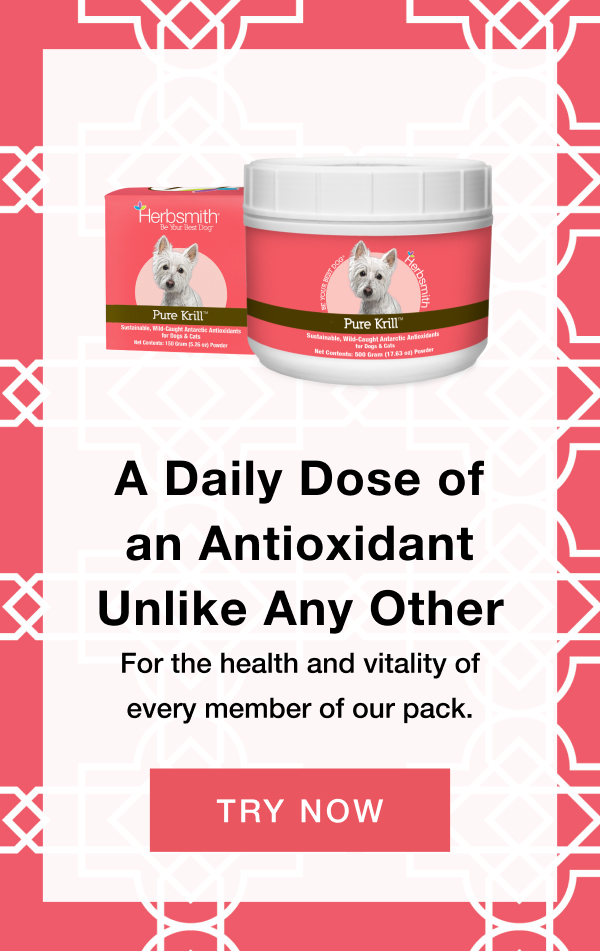
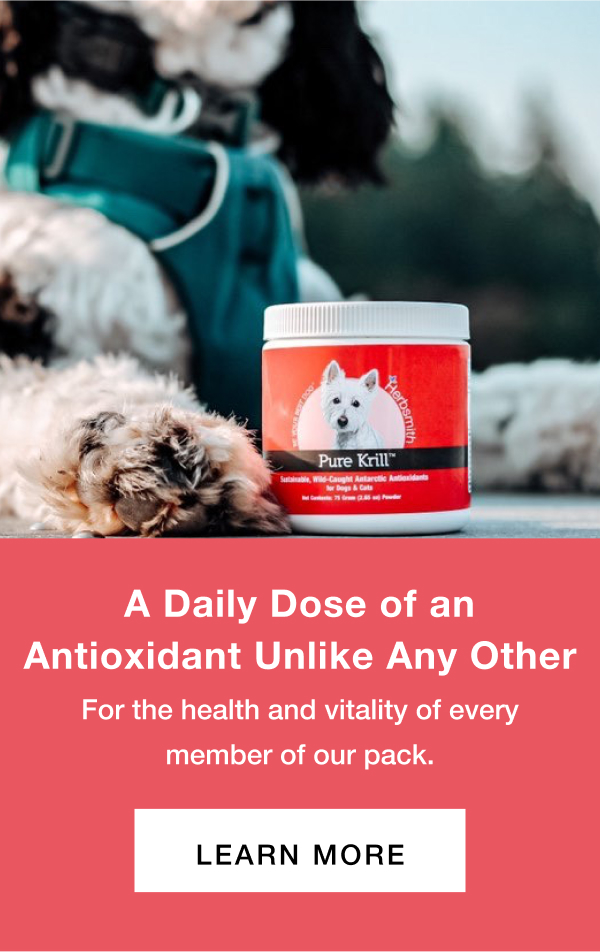

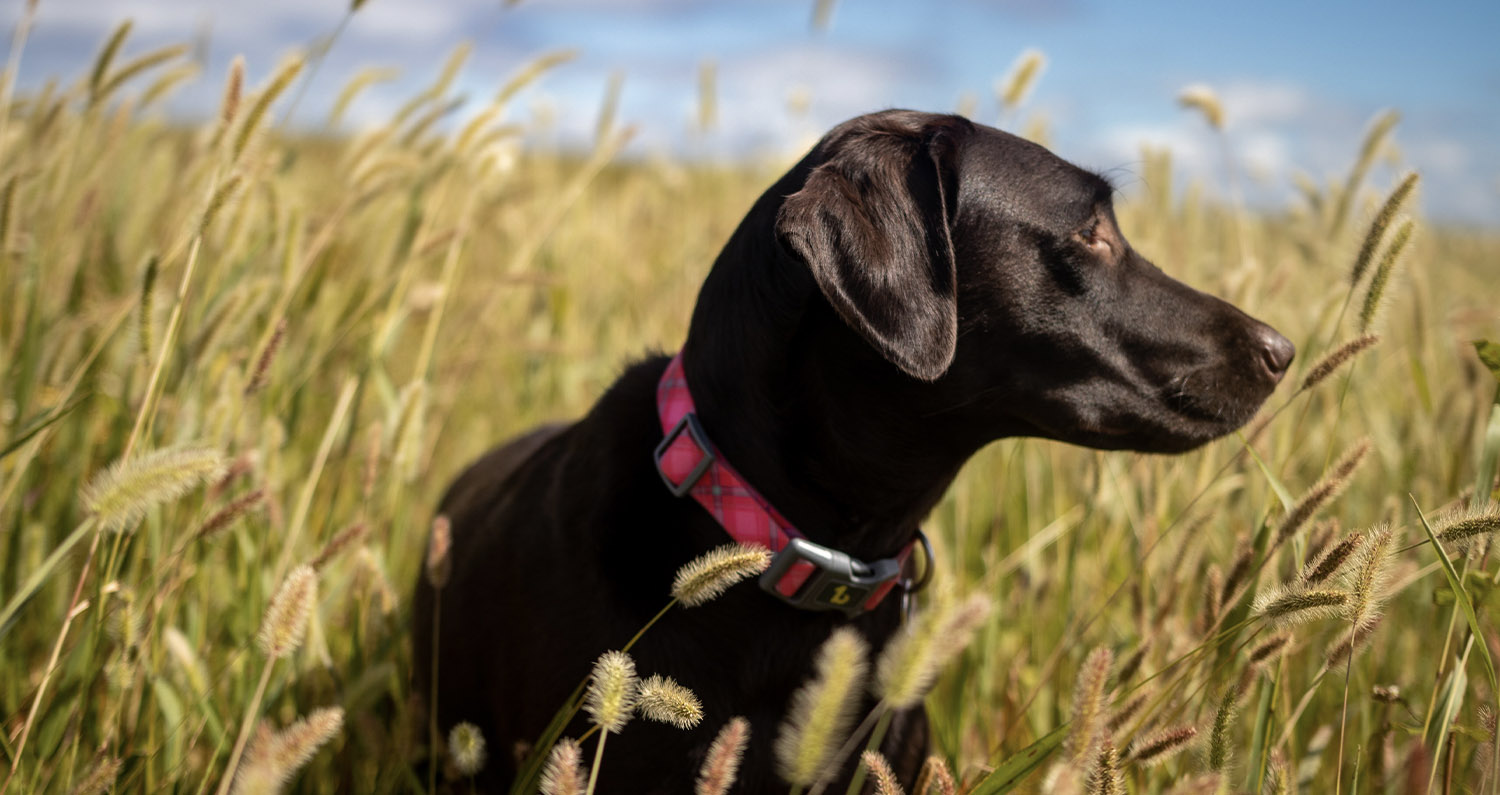

9 Responses
My maltese is 14.5 years old. I have been making her food for the past 11 years. Protein is turkey and liver; veg. sweat potato, pumpkin, peas and carrots; grains are flax seed, quinoa, oatmeal; and fruits are apple, blueberries and cherries. All this into a loaf and cooked to 163 degrees. Liver is a new add. She has a heart condition and is on meds..she is doing well but I’m not sure that I am doing the best for her. She gets a vitamin and your turine and probiotic in her food once a day. Parsley and ginger are also in the loaf. Should I transition her to fish? Should I add fish? She eats 2 oz in the AM and 2 oz in the PM…She weighs in at 6 lb 8 oz.
Excellent article! Thank you
My 10 year old Pom has a collapsed trachea since he was 6. He also has an enlarged heart. What would you advise me to feed and ad to his diet?
My dog is a diabetic,so I’m afraid to add the blueberries sweet potatoes & carrots as for the sugar & carb content pomegranates,some of the vegatables as well.
Please advise.
Hello Trudy! We would recommend a low-carb diet like SFP Chicken & Turkey recipe + Herbsmith Nutrients which is s a concentrated blend, so the antioxidants are present without the sugar.
Hello Roberta! Thank you for reaching out! I would recommend taking the Curate the Bowl quiz so Dr. Bessent can get a more comprehensive understanding of your dog and their history. This way she can make her recommendation on which herbs and food to use specifically for them 🙂
https://www.herbsmithinc.com/intro-quiz/
Hi Janet! It sounds like you are doing a great job with preparing a healthy balanced meal for your pup! I would recommend taking our “Curate the Bowl” quiz so Dr. Bessent can get a full overview of your pup and her health in general. She can then make a recommendation on what to add to the her bowl!
How do I find Curate the Bowl quiz?
Hello Janet! If you follow the link below it will take you to the Curate the Bowl quiz! 🙂
https://www.herbsmithinc.com/intro-quiz/
Comments are closed.